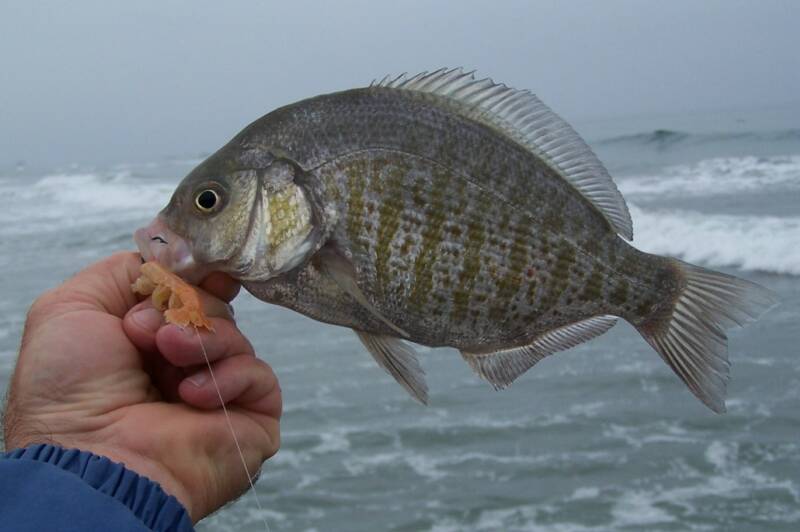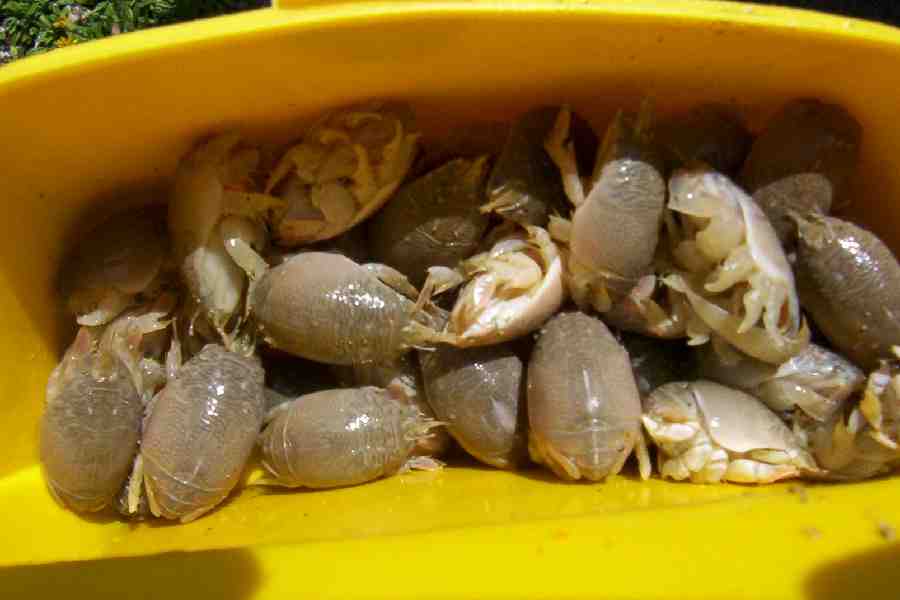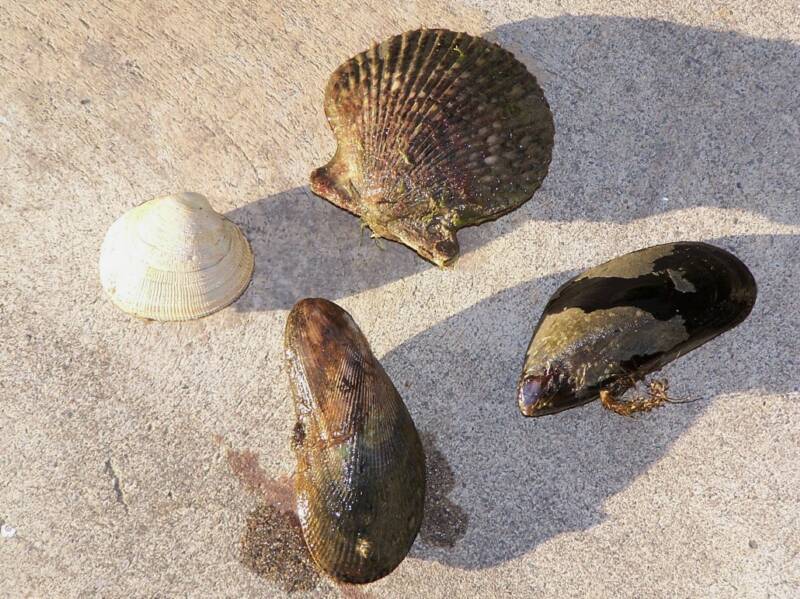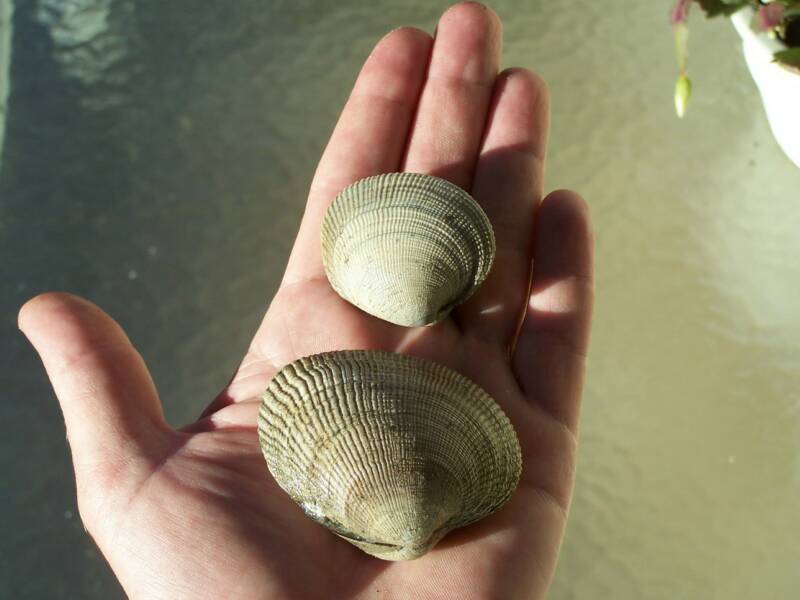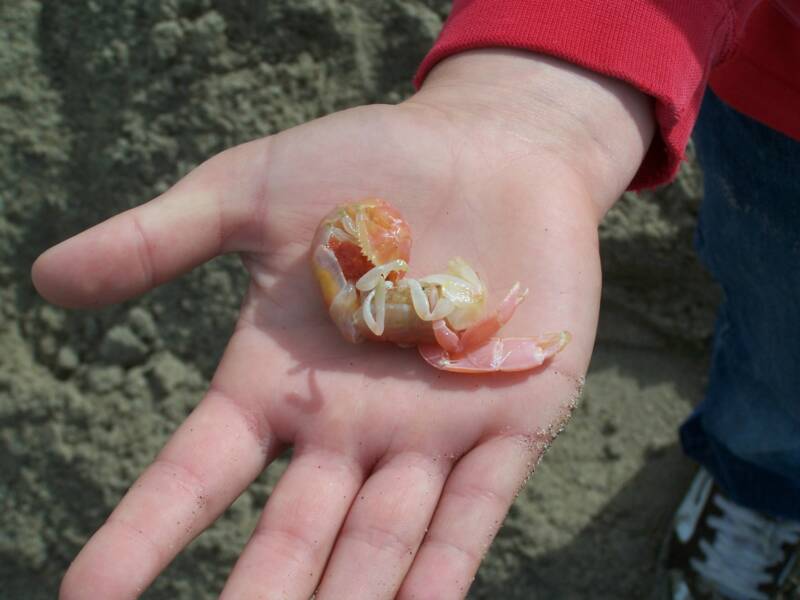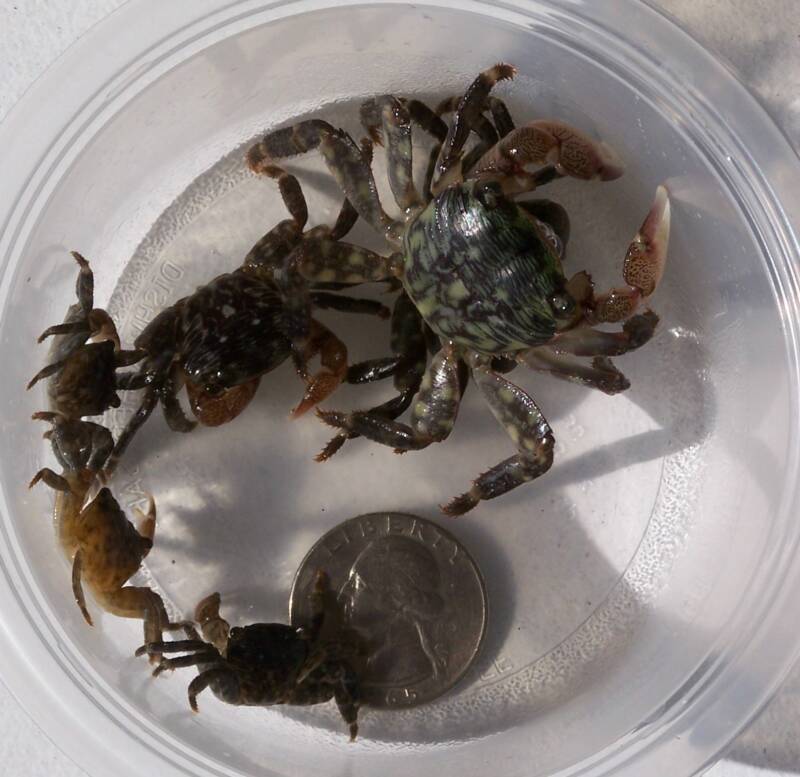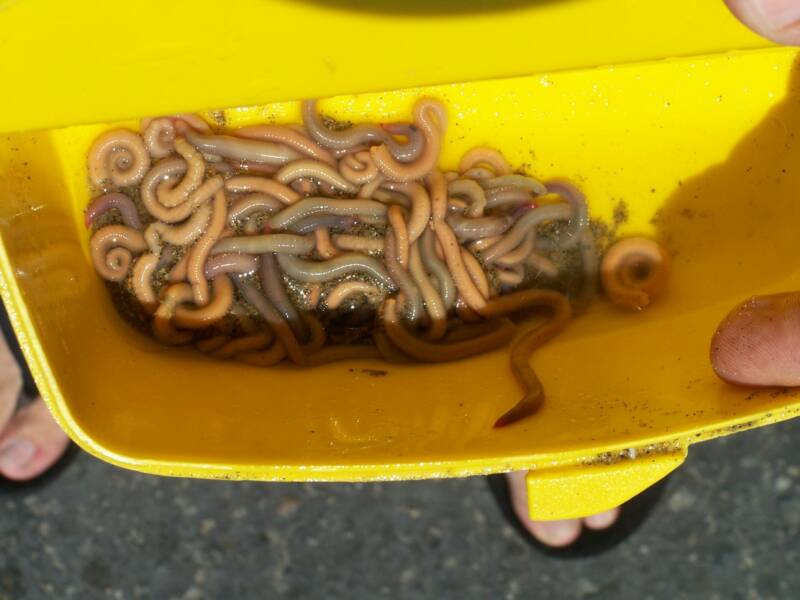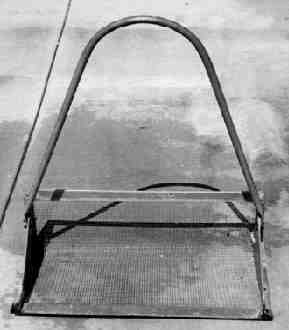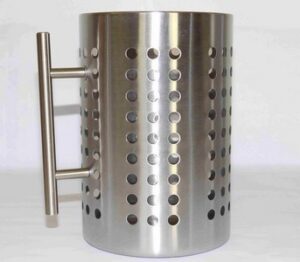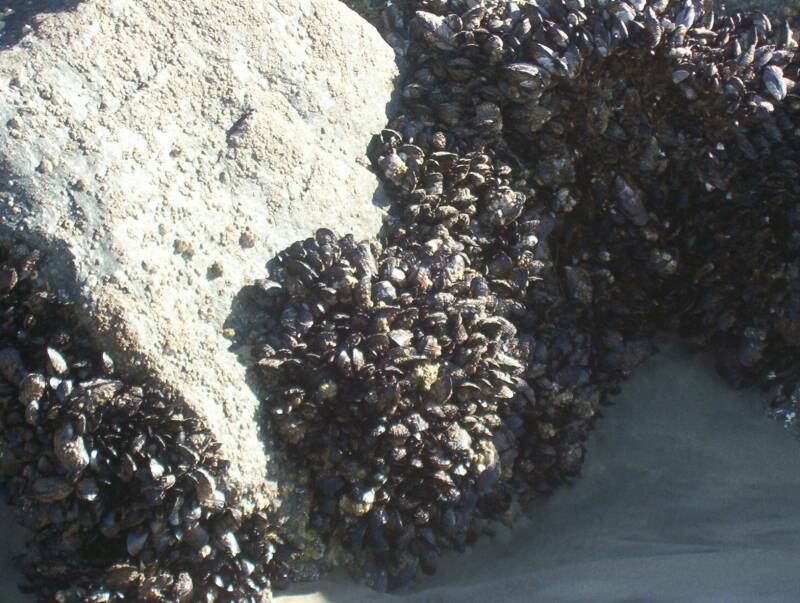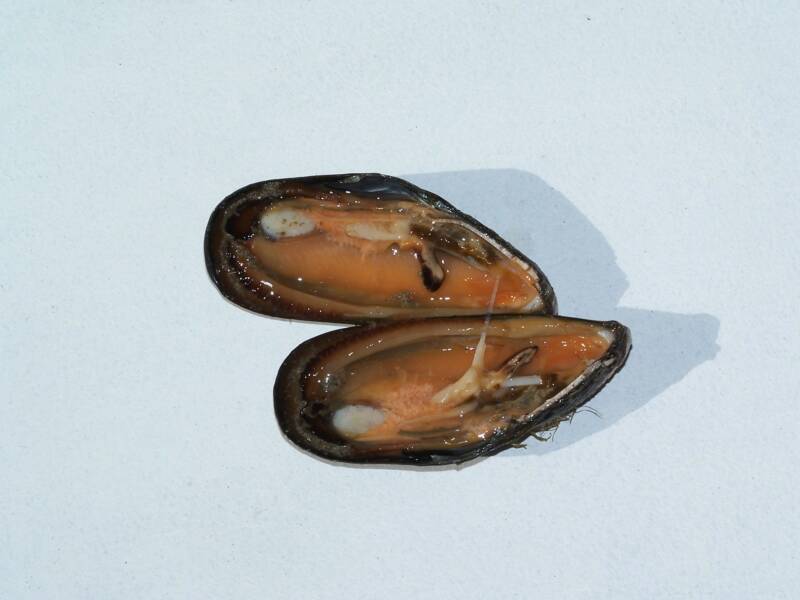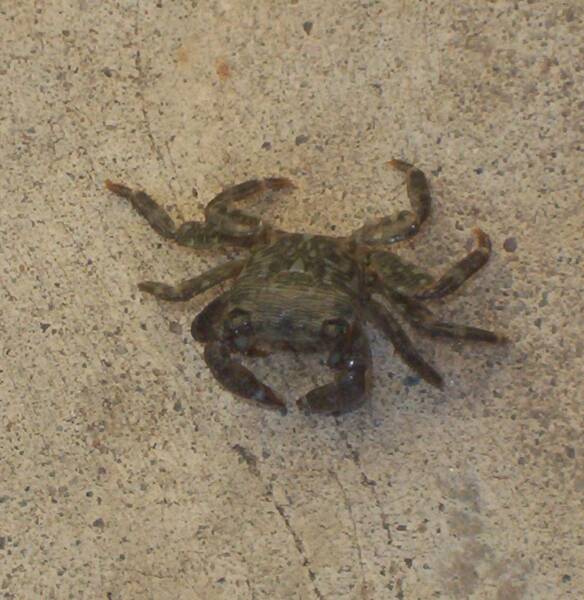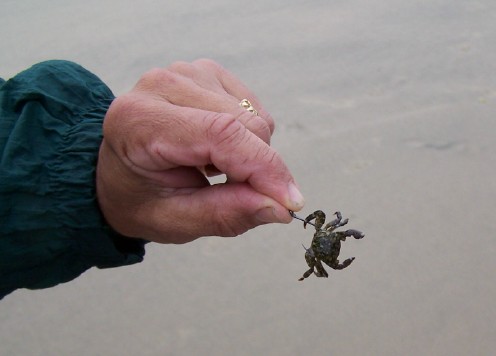Six Top Surf Baits
(You Can Collect for Free!!)
There’s nothing better than live bait for catching surf fish. California’s beaches, estuaries and harbors are loaded with bait you can collect for free. All it takes is a little time, patience and the right tide to collect what you need for a great day of fishing.One of my favorite rules when it comes to surf fishing is: Look for the bait that occurs naturally around the area you are fishing. If there are crabs in the sand or sidewinders on the rocks you can be well assured that’s what the fish are eating. Take a few moments the next time you go down to the beach and pay attention to what occurs there naturally—that’s usually your best bet for catching surf fish.
SAND CRABS
Some baits are available year-round, while others like the sand crab are seasonal and occur mainly in Southern California during spring, summer and early fall. When the local waters warm to around 60 degrees sand crabs will dig their way to the surface in search of food. As warm summer water bathes the beach the crabs grow and shed their shell. Much like a snake loses his skin, the crab also sheds and grows several shells throughout the summer.
My favorite time to collect crabs is at high tide. But crabs can be found in “beds” at low tide too. The two most common techniques for collecting crabs are digging by hand or using a galvanized sand rake.
I like to find an area near the high tide mark on the open sand beach and begin to dig there. When I dig by hand I search crabs within the first 6 inches and put them into a bucket for washing and sorting. If I use the crab rake I can pick out the best crabs and put them directly in my waist bait bucket and I’m ready to go.
For storing, I keep my sand crabs in a plastic container inside a small ice chest near a frozen bottle of water. They will live the longest in a 50-60 degree range so don’t put them in the refrigerator. Also, remember to place a piece of wet kelp you collected at the beach right on top of them. They will keep cool, moist and alive for about two days.
MUSSEL
Mussel can be found where rocks and structure meet moving water. You’ll find two kinds of mussel in our local bays. On outer rock structure like jetties and breakwalls rock or piling mussels cling in clumps to rocks and structure. These mussels can be up to eight inches long and have orange and brown meat. They group is large numbers and many times completely cover their host. Mussel has always been known for driving perch crazy but when rigged using only the lip of the mussel it is deadly for halibut too. The best place to find mussels is on rock jetties, pier pilings and near harbor entrances.
In bays and estuaries green mussel attaches itself to rocks and structure in small groups. Most often they can be found attached to the bottom of rocks. Look for this mussel in back bay areas where the water movement and wave action is gentle. Turning over rocks is a good way to find them. Be sure to replace the rocks once you’ve look so more mussel will continue to grow. The meat on this mussel is bright green and seems to work both as a sight and taste incentive for fish to bite. Most green mussel is four inches or less in length.
When collecting mussel and other baits know the DFG rules and collect only what you need. On the Internet you can check here for the latest rules and regulations: http://www.dfg.ca.gov/marine/sportfishing_regs2008.asp
In most cases I use about 10 mussels each time I fish. If you place the mussel in a bucket overnight it will be easier to shuck the next day. If you seal the unopened mussel in a plastic container and refrigerate, it will last almost two weeks. I like to clean some extra mussel, put it in a small zip top bag and freeze it. That way next time you go fishing you bait is ready to go.
CLAMS
There are several types of clams found on California’s beaches including Pacific Littleneck, Gaper, Pacific Razor, Nuttall Cockle and Pismo clams. All of these clams make great bait but without question one of the most abundant and easiest to collect is the Littleneck.
Littleneck Clams are found in areas where sand and mud meet rocks and in calm bay areas like harbors and estuary inlets. Outside harbors where sandy areas meet rock, look for them to be buried in less than six inches of sand. They like to congregate in groups, buried in sand, adjacent to rocks. Look for holes in the sand that clams use for feeding and many times you’ll find them just beneath.
When you find clams smaller than the legal size always be sure to replant them in the sand. When searching for calms think about where rivers, creeks and estuaries meet the ocean. This is where you will find them most abundant.
Littlenecks are also found in back harbor areas under small stones adjacent to mud and sand. Look for rocky areas that have stones about the size of a shoebox. Try to find where sand or mud is near or under the rocks. Carefully, turn each rock over and look for them just below the rock on in the mud or sand beneath. Always be sure to put the rocks back as you found them, so that next time you go down to collect clams there will be even more!
I generally collect no more than 10 clams per person for each day of surf fishing. Like mussel, clams keep well in a sealed plastic container in the refrigerator, staying fresh for about two weeks. It’s a good idea to shuck clams the night before you go fishing. That way you’re not fumbling with your clams and a knife at the beach (“did anyone see my finger?”).
GHOST SHRIMP
Ghost shrimp can be collected by hand or purchased at some tackle stores. Surf fishermen rave about how well ghost shrimp work. In fact, if you ask what type of fish they catch most might say they catch whichever fish gets to their bait first! Some of the biggest corbina and spotfin croaker I’ve ever seen were caught on a shrimp—seems to be an oxymoron but who cares if it works!
Ghost shrimp or yabbies, as they are called in Australia, can be found in estuaries and inside back harbor areas. Ghost shrimp burrow into mud areas and can be most effectively harvested with a shrimp plug at low tide. This device uses suction to pull a plug of mud from the bottom. You then push the mud plug out and search for ghost shrimp.
Ghost shrimp can be kept in a loosely sealed plastic container in the refrigerator for up to one week. It’s a good idea to collect a bottle of seawater from the beach and rinse the ghost shrimp with it daily.
SIDEWINDER ROCK CRABS
Sidewinder rock crabs make great bait for perch and croaker and seem to work best when used near rocky areas. You will see these crabs in large numbers scurrying back and forth on local rock jetties. They are brown and green in color and possess two large (and sometimes painful!) claws. They generally live between rocks in nooks, crannies and crevices.
The best place to find sidewinders is just above the waterline on rock jetties and tide pool areas. Look for them between mussel clusters, in crevices between rocks and by flipping over small rocks. Sidewinders can be found at both high and low tide and seem to be easiest to see and catch on overcast and cloudy days. I generally catch them by hand but you can also put a small piece of anchovy, cat food, mussel, etc. in a can, place it between the rocks, tilt it on its side and come back later to see what you’ve caught.
Sidewinder crabs are very hardy bait and can be kept for a week or longer. Place sidewinders in a plastic tub with a large piece of kelp to keep them cool and moist. I usually drape a towel or newspaper over the container to keep light (and our cat!) out. Sidewinders, like sand crabs, should not be kept in the refrigerator.
SAND WORMS
Sand worms live beneath the sand and make great surf bait. Fresh worms work well for perch, croaker and an occasional halibut. These worms can be found at the beach throughout the year but are most active during spring and summer grunion runs. Their color takes on what they have eaten. Many times they are an olive green and orange from eating clams and other times they may be red and green from eating grunion eggs.
When looking for worms at low tide start by digging ten to twenty feet below the high tide mark. Most worms are down about 12”-36” and occasionally can be found in groups. Begin by digging a hole three feet wide and one foot deep.
Look for the worms as you dig. Remember they can climb away fast so keep a close eye. Catching worms takes a bit of practice–because they can dig away from you at a slithering fast pace. Start by grabbing the worm as it digs away. You may dig around it to catch the worm or pull it slowly backwards until it lets loose and comes out.
Worms are very hardy and easy to keep. Simply place them in sealed plastic container and put the in the refrigerator. They will bunch up and stay lively for about a week. I like to use a #2 split shot hook and thread one or two worms up the hook for bait.
Spending a little time collecting bait at your local beach can really pay off. Even when fishing with artificial baits it’s important to know what fish are eating. That way you can match your baits to the colors and size of what fish eat everyday. Not only is it fun to find, collect, rig and fish natural baits but with so many things that cost money today it’s still nice there’s something out there that’s still free!
